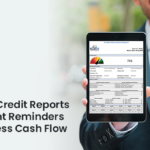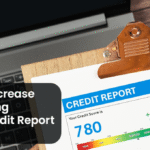Smaller and medium sized businesses have to deal with multiple clients at the same time to get their businesses up and running. They are against some of the biggest competitive giants in the market, which leads to certain high-end pressures on their business run. However, things might not run as smooth as always and some clients might turn defaulters. They fail to pay the prices of the services or products procured from MSME, which will hit the capital of the company hard. Being novices in this run, these smaller businesses don’t have pent up money to get rid of debt.
Ways to make business foolproof from defaulters:
It is always mandatory to create a foolproof plan, which will keep defaulters at bay. At first, you need to get into a signing contract with the clients to get payment rightfully on time.
- Moreover, being smaller companies with limited budget, you should try to get payment first for the services. This way, you won’t work if you don’t get the money.
- If you want, you can ask for half payment first and the next half after completion of the project.
- Do check out the credentials of the clients to see their track records on CreditQ portal. If they haven’t proved to be defaulters before, you are on safe hands.
Warning sign that indicates that client might be a defaulter:
It is the duty of the company’s financial advisor to keep eye on the clients and be on lookout for pending payments that might fail. It is time to check out on some of the warning signs to determine if client company is on verge of bankruptcy or headed towards some financial difficulties, leading to play the role of a defaulter.
- Companies which are losing money from one quarter to another will burn through their cash fast. It is vital to review the financial status of the client’s firm and its cash flow statement for determining how the cash is being spent.
- Make sure to compare the present cash flow and cash holdings with same period in previous year for determining if there is a trend.
- If the firm is burning through cash because of increase in the investment count, it means the client company is investing in future. But, if on cash flow statement, the company is putting out cash to operate activities and not earning a profit, chances are high they won’t be able to pay the pending amount and turn a defaulter.
- Companies need to have retained earnings, where the money is left over after earning profit for period. Primarily RE is savings account for firms that accumulate profits over time to reinvest back into firm, or purchase back stock. If the RE fails to increase or turns non-existent due to absence of buybacks and dividends, the client firm is not profitable or barely getting by. During such times, client companies might turn into a defaulter.
What to do to avoid a defaulter:
There are times when a client company is on the verge of defaulting because of many reasons. Maybe their business is not generating the revenue they thought of, or it is running into loss. What can you do during such instances to make sure that you get your dues from them? Some points will serve you with right options.
- If the client business thinks the due amount is too heavy for them, then try negotiating with your client to pay in a longer tenure. Increasing tenure will reduce load on the client and they might not turn as defaulter.
- You can further negotiate with the client company to delay payments for a certain time during emergencies like job loss or crisis.
Options are plenty to help you keep business out of defaulting clients. Following the norms well will serve you with pretty good and positive results.









